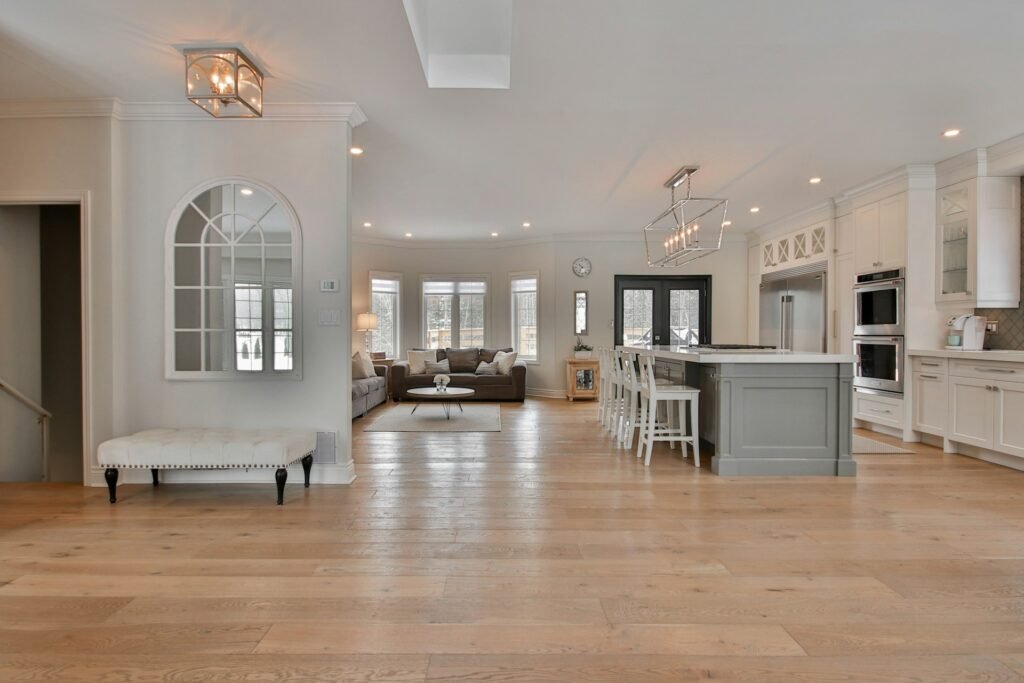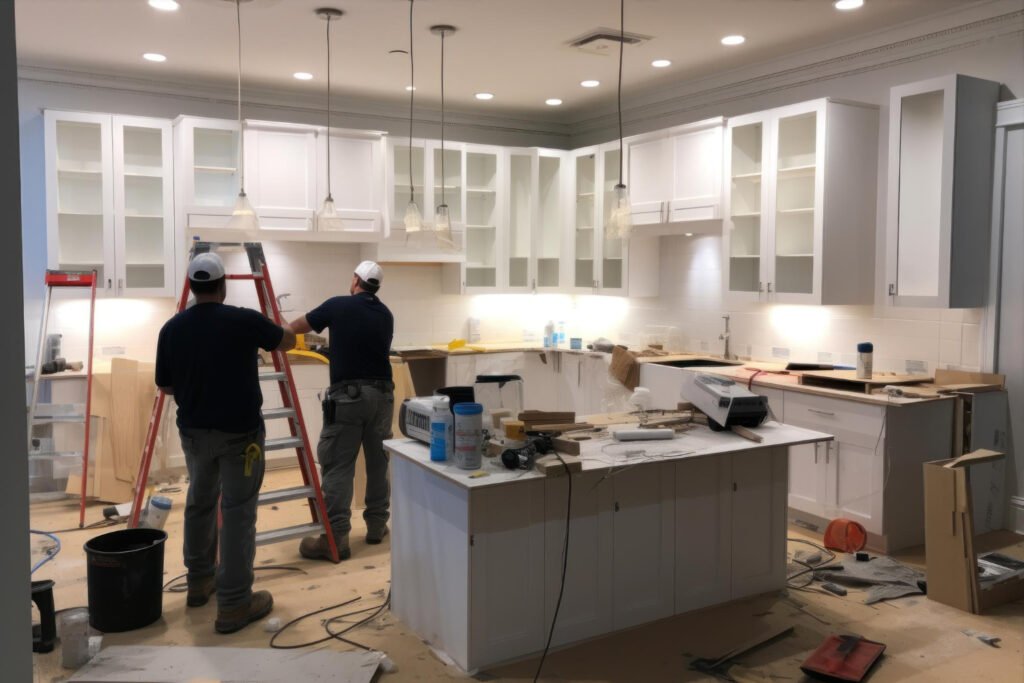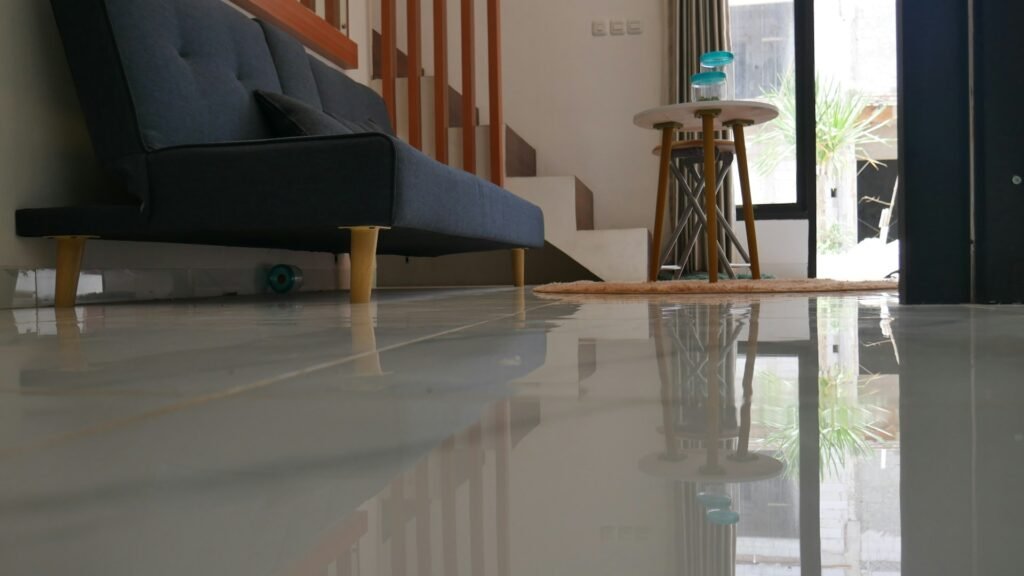You’ve just had new flooring installed, and everything looks great. It’s clean, smooth, and ties the room together. But after a few days or weeks, you start to hear it — a small creak here, a subtle squeak there. What should be a quiet, seamless surface starts making noise every time you walk across it. It’s frustrating, especially when you expected brand-new floors to feel solid and soundless.
Squeaky flooring is more common than most homeowners realize, and it can happen even when the job is done right. Brand-new floors may begin making noise due to changes in weather, shifting in the structure of the house, or issues under the surface that weren’t noticeable right away. The good news is that the sound doesn’t always mean something serious is wrong. But it does mean it’s worth your attention — and knowing what’s causing it is the first step to fixing it.
Common Causes of Squeaky Flooring
Floor squeaks usually happen when pieces of the flooring system move against each other. That might sound simple, but there are different reasons why this movement starts in the first place. Most of them point back to how the house behaves over time and what’s happening underneath the surface you walk on every day.
Here are some of the most common causes of squeaky floors, especially in homes where the flooring is still fairly new:
– House settlement: As homes age, they settle. This means the foundation and framing shift slightly. These subtle changes can cause gaps between the subfloor and floor joists, which then lead to squeaks when walked on.
– Humidity and seasonal changes: In places like Orlando, the weather can shift from humid and hot to relatively dry, especially indoors if the AC is always running. These changes can make wood and other flooring materials expand and contract, causing movement between boards or layers.
– Improper subfloor installation: Sometimes, the subfloor may not be secured tightly enough during installation. If it’s slightly loose or doesn’t line up well with each joist, it can rub and squeak under pressure.
– Fasteners and connectors: Screws or nails that aren’t fully set into place can rise slightly due to pressure or movement. Even a tiny gap or misalignment can result in a noticeable noise.
Think of it like this: a squeak is the floor’s way of saying something underneath isn’t working together smoothly. Whether it’s from natural shifts or a minor installation hiccup, these noises often point to a loose connection that causes friction. Catching this early before it grows into a bigger issue will keep your floors quieter and potentially save you from costly repairs later.
Diagnosing the Issue
Once you start to hear squeaks, the next step is figuring out where they’re coming from and what might be causing them. Some spots will make more noise than others, and it’s usually tied to movement in a specific area rather than the entire floor.
To help narrow it down, try the following:
1. Walk slowly and observe: Take your shoes off and walk barefoot or in socks over the area where you hear the squeak. Take your time and listen closely. Try shifting your weight from heel to toe. Note exactly where the squeak starts.
2. Mark the spot: Once you’ve found the noisy area, mark it with painter’s tape or something that won’t leave a stain. This way, you can come back to the right spot when checking things out further or when calling in help.
3. Check for movement: Lightly press down on the floor using your foot or hands. Does the surface move downward or bounce? If so, the subfloor might need more support.
4. Pay attention to timing: Does the squeak get worse at certain times of the day or during changes in temperature or humidity? This could point to seasonal movement caused by moisture in the air.
The sooner you locate where and when the squeak is happening, the easier it will be to figure out the fix. Plus, knowing whether it’s in one area or throughout the space helps determine if it’s a single loose board or something wider across the structure. Addressing it early on means less stress and fewer surprises as time goes on.
Solutions and Fixes for Squeaky Flooring
Once you know where the squeak is coming from, it’s time to consider some potential fixes. Depending on the cause and severity, solutions can range from simple at-home changes to professional assistance. It’s best to start with the basics and then decide if further action is needed.
For quick adjustments at home, try these remedies:
– Lubrication: Sprinkle talcum powder or graphite powder between the boards and gently work it in. This reduces friction and can quiet down noisy spots temporarily. Make sure the powder doesn’t clump, as that can create its own issues.
– Reinforcing fasteners: Check if any nails or screws are loose. If possible, drive them back into place. Doing so can tighten the boards against the joists and reduce movement.
Despite these simple strategies, some cases require a more in-depth approach. Here’s when you might need to engage professionals:
– You’ve tried basic fixes, and the noise persists.
– The squeak indicates a deeper issue, like significant movement between subfloor layers.
– There is visible sagging or bouncing in the floor, suggesting structural concerns.
Keeping humidity levels steady can also help maintain the integrity of your floors. Use dehumidifiers or your HVAC system to manage air moisture, especially in Orlando’s changing climate. Regularly check your floors for early signs of movement or noise. Addressing these issues early makes long-term maintenance easier and more affordable.
When to Contact a Professional Remodeling Service
Getting help from professionals becomes necessary when the squeak doesn’t go away or if deeper problems exist. Flooring installers and remodelers have the tools and experience to evaluate the issue properly and fix it without introducing new problems.
Hiring a remodeling service makes sense when:
– You’ve already tried the easy fixes with no success.
– Your flooring warranty requires a licensed professional for any repairs.
– There are signs of structural issues that need more than surface work.
Experienced remodeling professionals understand floor systems and have access to high-quality materials and methods. They make sure everything works together securely again. Professional crews can also see related concerns homeowners might not catch early on.
A remodeling service also gives peace of mind. Homeowners can feel confident knowing the squeaks are gone and future noise is less likely. It’s a smart step if you want those new floors to feel as good as they look.
Create a Quiet and Comfortable Home with Help from Experts
Living with squeaky floors can be a daily annoyance, but recognizing the source makes the fix easier. Finding the cause and acting quickly means your floors will stay stable, attractive, and quiet.
Professional help often gives better results than taking it on yourself. When you trust the job to someone skilled, those loose boards or gaps between layers stop being a long-term issue. With quality work and smart prevention, it’s possible to enjoy your quiet, polished floors without interruption.
Let the right team handle the repair and keep things from getting worse. With help from experts, your floors will work like they should—quietly supporting every step forward.
Ready to tackle those squeaky floors once and for all with expert help? Learn more about how a remodeling service can make your floors silent and sturdy, ensuring long-lasting comfort and style in your home. Trust FC Contractors to get the job done in Orlando, keeping your living space as peaceful and beautiful as you deserve.




